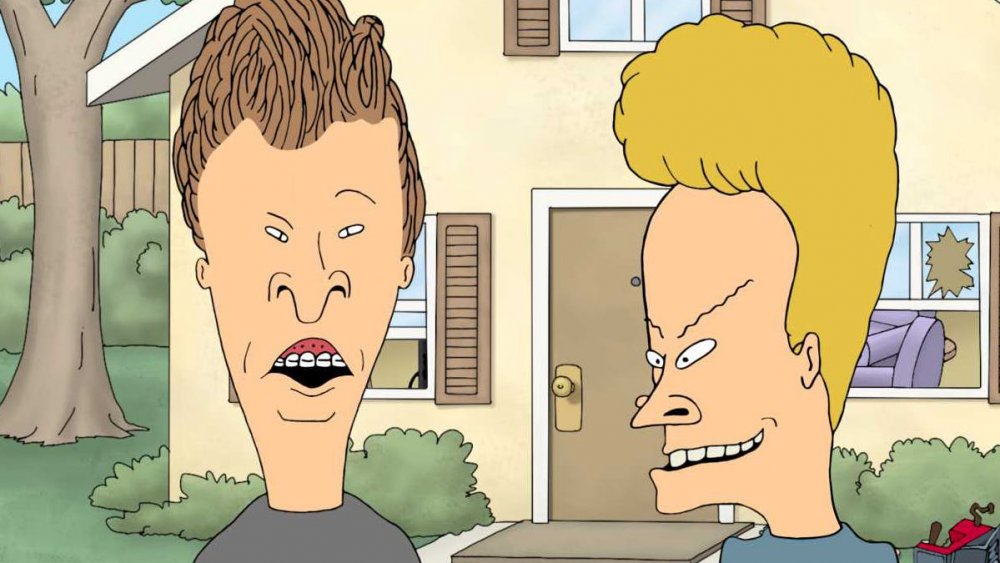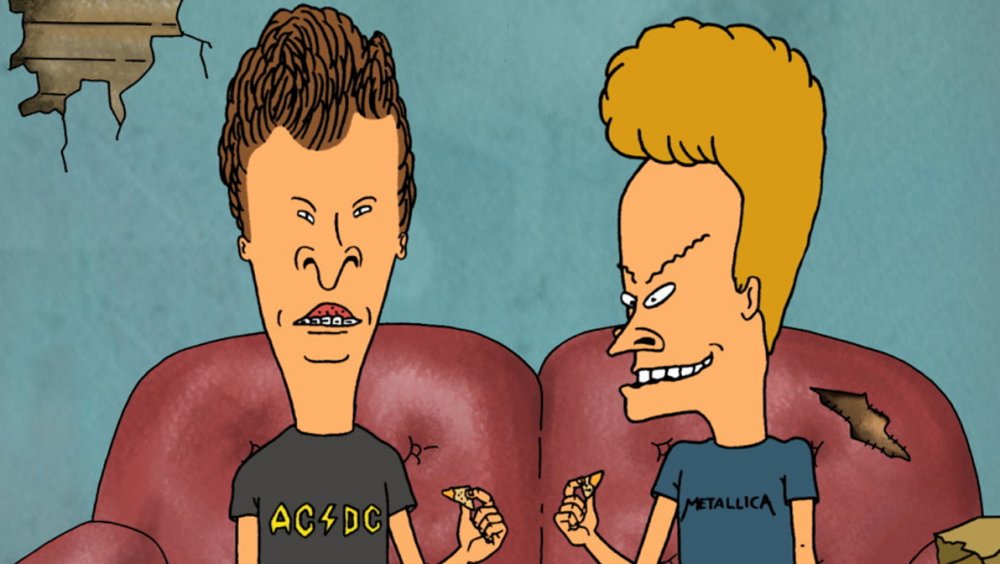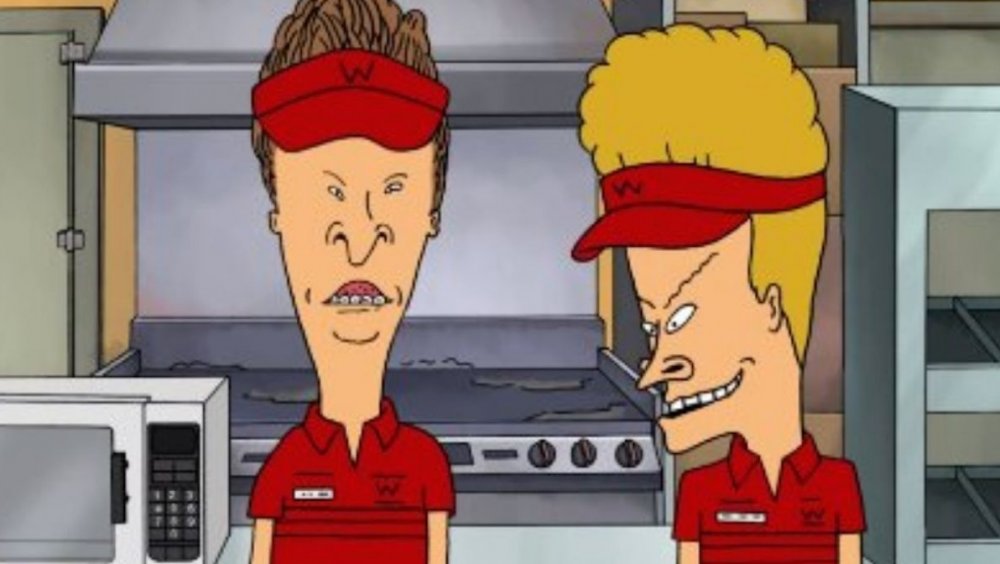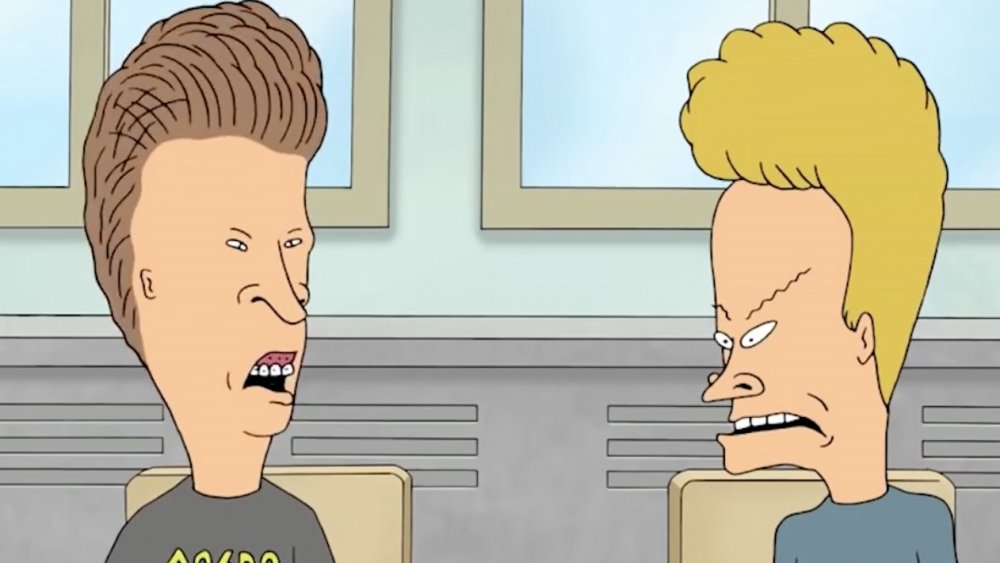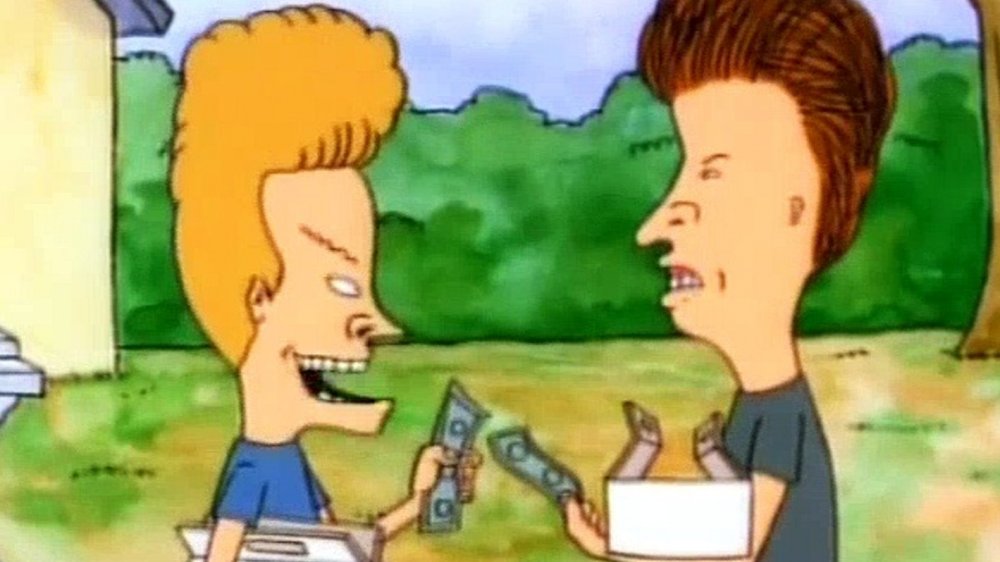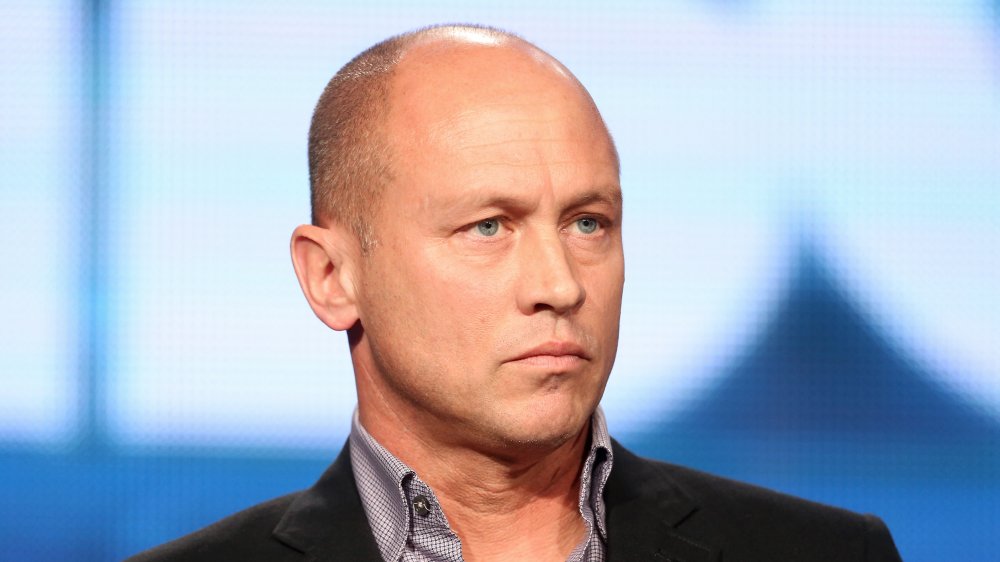The Real Reason The Beavis And Butt-Head Revival TV Series Failed
In March 1993, MTV, at the time still largely an outlet for music videos, quietly debuted an animated series called Beavis and Butt-Head. It told of the adventures of two degenerate, incredibly stupid, teenage metalheads who lived in a sleepy Southwestern town as they made life miserable for their teachers and neighbors. Beavis and Butt-Head were dudes who loved laughing all the time, hitting on "chicks," and proclaiming what things "sucked" or "ruled." They also watched a lot of TV, and each Beavis and Butt-Head cartoon featured the duo pointedly and hilariously mocking music videos.
The show became a pop cultural phenomenon, and it spawned the big-screen spin-off Beavis and Butt-Head Do America, but by 1997, creator Mike Judge was ready to move on. However, the show returned, ever so briefly, in late 2011 for a run of new episodes. But then just as quickly as it arrived, the Beavis and Butt-Head revival disappeared. So why did it fail? Well, here are some factors that prevented a second season of the new Beavis and Butt-Head.
Beavis and Butt-Head wasn't wild anymore
In the '90s, Beavis and Butt-Head was considered scandalous, if not controversial, and it got a lot of people upset because of its crude, rude, destructive, and antisocial characters. Beavis' frequently stated love of playing with fire — and its supposed role in a real-life copycat act where a kid burned down his family home — led MTV to ban all references to the hot stuff in the series. Even a legislator criticized the show on the floor of the U.S. Senate.
That all just made Beavis and Butt-Head seem super edgy, and if not for the series testing the public's appetite for sick and twisted animation, there might not have been shows like Family Guy, South Park, or Aqua Teen Hunger Force. Beavis and Butt-Head made room for a vast TV landscape full of adult animation ... so much so that by the time Beavis and Butt-Head reappeared on MTV in 2011, it didn't seem that provocative anymore. If anything, it felt like a cynical cash grab to some viewers. USA Today interviewed students at the University of North Carolina at Asheville about the revival, and many of them felt the show was "playing into the rampant '90s nostalgia that's going on now," while others believed creator Mike Judge was trying to "capitalize on the memories of kids who grew up in the '90s."
It was stuck in the '90s
Not only was the whole vibe of Beavis and Butt-Head possibly played out by 2011, but so was the content of the show. Beavis and Butt-Head struck a chord in the early '90s because, despite being a crudely animated series, it felt like a slice of life. Beavis and Butt-Head — a couple of bored teens who watch TV, hate school, and busy themselves with troublemaking — seemed far more realistic than any other portrayal of young adults on TV, like the ones on Beverly Hills, 90210 or Saved By the Bell.
But when Beavis and Butt-Head returned to the airwaves in 2011, their activities still felt like a slice of '90s life. Try as they might, the new Beavis and Butt-Head writers had a tough time updating the characters for the modern world. The characters also still wore the same T-shirts bearing the names of AC/DC and Metallica — two bands long past their prime and no longer favored by your average 15-year-old.
They tweaked the format
While the Beavis and Butt-Head revival felt like a '90s time capsule, its creative staff and the powers-that-be at MTV did try to update a big chunk of the show's format. When the series premiered in 1993, MTV (and other video networks like VH1 and CMT) aired many hours of music videos each day, and Beavis and Butt-Head would scan through such outlets to find videos they could either headbang to or savagely mock. By 2011, MTV had evolved into a repository of reality shows about teens and young adults — its target audience.
And so, when Beavis and Butt-Head reemerged in 2011, episodes might feature them viewing one or two music videos for old time's sake, but the duo mainly provided catty commentary on clips from MTV's library of reality shows, such as True Life, Jersey Shore, and 16 and Pregnant. Unfortunately, this didn't really work the same way it did when they were making fun of videos, and as a result, Beavis and Butt-Head were strangers in a strange land, lost souls from another time.
The ratings for the Beavis and Butt-Head revival were bad
Television is a business, and networks determine what shows to renew and keep investing in based on how many viewers they pull in, which helps set advertising rates. Generally speaking, the better a show's performance in the Nielsen ratings, the more likely it is to be profitable and earn another season. The end of the Beavis and Butt-Head revival may have come down to a simple business decision of this type.
Nostalgia-driven viewers initially turned out for the new Beavis and Butt-Head. The premiere episode, broadcast on October 27, 2011, attracted 3.3 million viewers. In the coveted 18-49 demographic, it pulled a 1.8, defeating all other shows on cable primetime that night. Still, Beavis and Butt-Head didn't bring in as nearly as large of an audience as the show it temporarily replaced in its time slot — Jersey Shore — but MTV had to have been happy with those numbers. They definitely weren't so pleased with the ratings that subsequent airings of Beavis and Butt-Head received. Viewers didn't stick around from week to week, with the season finale on December 29, 2011 drawing a paltry, cancellation-inviting 919,000 total viewers and a 0.5 in the 18-49 demo.
A changing of the guard killed the show
One major factor in MTV's decision to not bring back the revived Beavis and Butt-Head for a second season involved some good, old corporate interference, or rather, a lack thereof. While he ended the series of his own accord back in 1997 due to dwindling creative energy, creator (and star) Mike Judge felt recharged by the time the 2011 reboot rolled around, and he apparently had plenty of gas left in the tank because he didn't actually want the show to end when it did for the second time.
Sadly, the show never came back, in 2012 or beyond, because it got "kind of caught up in some kind of changeover of the top brass of MTV," as Judge told Mandatory in 2014. Often times, when new TV executives come in, they want to focus on their own projects — and not those of their predecessors — which could've been what doomed the revamped Beavis and Butt-Head.
